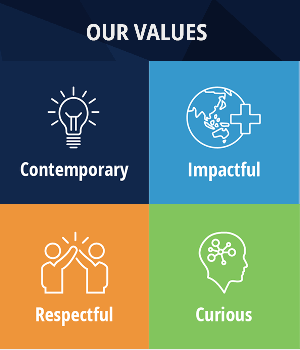Many businesses will be familiar with the system of clocking in and out of work using punch cards, passwords or swipe cards.
More recently, the developing field of biometrics has made its way into the workplace as a means of monitoring employee attendance and absenteeism. Biometrics can be described as the measuring and recording of physical characteristics, such as fingerprints and retinal patterns, to verify an individual’s identity.
There are other alternatives used to identify individual employees and these include face recognition whereby the technology recognises certain face features and voice recognition, whereby a voice of a certain individual is recorded and used in recognising the speaker.
Like with any emerging technology, there are pros and cons to implementing such systems and consideration should be made as to whether it is practical for the business to implement processes such as retinal and fingerprint scanning to monitor working hours.
How does it work?
Fingerprinting works by placing the finger on a sensor which captures and records the pattern of the fingerprint, measuring the distance between the ridges and valleys. This pattern is then converted into a numerical code and recorded in a database, to be linked to the profile of the individual, which means that the fingerprint itself is not stored.
Retinal scanning requires an individual to look through the eyepiece of a scanner, which casts a beam of low-intensity infrared light onto the retina at the back of the eye, lasting for around 10 to 15 seconds. The blood vessels in the retina are more absorbent of light than the rest of the eye and have a unique pattern, which is recorded, converted to a numerical code and stored in a database.
The advantages to using biometrics for clocking in and out may include:
- No two sets of fingerprints or pattern of blood vessels in the retina are the same, making them very difficult to replicate.
- Fingerprint scanning is simple, non-invasive and efficient.
- Retinal scanning is extremely reliable in that it is said to have an error rate of only one in a million.
- Employees do not have to remember a password or bring a punch card with them to clock in and out.
- It stops ‘buddy punching’ where employees clock time on behalf of one another with the business paying for time not being worked.
- It minimises the risk of unauthorised people entering the premises.
- It reduces the likelihood of payroll errors and time devoted to manual administration, and simplifies the monitoring of employee absenteeism and punctuality.
Conversely, the disadvantages of using such systems may include:
- Retinal scanning is more invasive than fingerprinting, and may cause some minor discomfort.
- Conditions such as cataracts and severe astigmatism can affect the accuracy of retinal scanning.
- Dirt, moisture or manual labour which damages the skin on the fingertips may affect the accuracy of fingerprinting.
- Scanning technology can be expensive to purchase and install.
- The business may need to consider how to manage employee concerns regarding privacy.
- Employees working from home on flexible arrangements may not be able to log their time using this technology.
- Using face recognition technology can be affected by the age of the data, because as the individual employee is ageing, the face expressions may change.
- Voice recognition may not work well in noisy conditions and there is a risk that a work mate may clock in and out on behalf of someone else by using a pre-recorded voice on their mobile phone.
Further information on biometric systems can be obtained from the Biometric Institute website.
Case Study: Macquarie University
Campus Experience, or U@MQ, is the student organisation at Macquarie University. They have recently implemented a time management system using biometric technology, replacing a system of manual punch-cards utilised to monitor and record employees’ attendance. Employees now use a combination of swipe card and fingerprint technology to verify their identification.
U@MQ manages the non-academic services at the university such as food, retail, sport and recreation and employs a large number of casual employees. U@MQ uses this technology to keep track of time worked by these employees and to assist with payroll processing.
What does it mean for your business?
From a Human Resources perspective, this technology provides a secure, accurate and efficient means of monitoring employee attendance and actual hours worked. Having an automated database in place may reduce administrative burdens and the risk of payroll errors. However, the equipment and its installation can initially be expensive and its use may encounter resistance from employees with privacy concerns, or who consider the technology to be invasive. Fingerprint and retinal scanning is still commonly associated with organisations requiring maximum security, such as military and banking organisations, and therefore may be seen as unnecessary for the average business. A cost-benefit analysis would assist in deciding whether this technology is right for your organisation.
Frequently asked questions
Q: We have recently implemented a fingerprint scanning system which has replaced our old system of getting employees to clock on and off using a punch card. One employee is refusing to have their fingerprint scanned, raising concerns about their personal data being stored by the company. All of our other employees have happily cooperated with the new requirements, but we can’t get this employee to clock in and out using the new system. What can we do?
A: Generally fingerprint scanning technology does not take a copy of the individual’s fingerprint; it simply scans it and converts it into a numerical code. This means that the company will not be storing any personal data or copies of a fingerprint, simply a set of numerical codes similar to an employee ID.
This can be explained to the employee, who should also be given an opportunity to voice any other concerns they may have. If all concerns are taken into consideration and the process is adequately explained to the employee, ensuring confidentiality and respect for privacy, performance management measures may then need to be taken should the employee continue to refuse to comply with company requirements. Employers should contact the Employee Relations Advice Centre for further guidance on the performance management process.
Q: What happens if one of my employees challenges the accuracy of their clock in and out times?
A: All employees must be paid for their minimum contracted hours of work per week, unless they are on an unpaid absence. If the dispute arises around overtime worked, generally overtime will be approved by a supervisor or manager who should be able to verify this with you. If the dispute arises surrounding absenteeism or tardiness, again this should be verified with the employee’s supervisor.
Employers are encouraged to contact the Employee Relations Advice Centre on 9365 7660 or email [email protected] to further discuss the introduction of biometric testing in your workplace.












